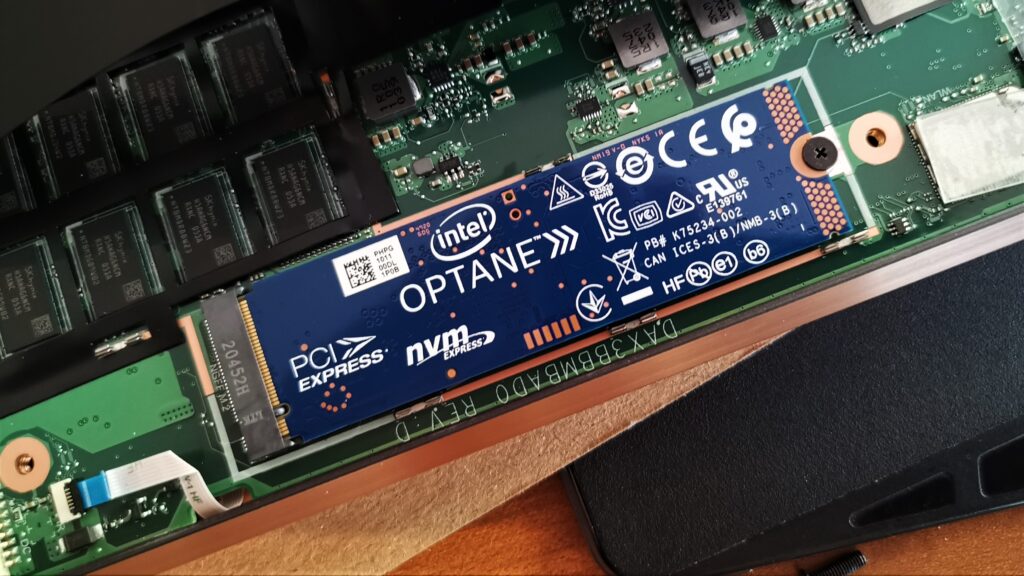Just about this time two years ago, we posted our report on the Intel H10 Optane Memory SSD and benefits it could bring to your everyday PC use. A quick review of that report might be a great start here as it provides an in depth look at SSD hot caching and what hot caching does for your system. Briefly, hot caching is where the PC stores frequently accessed data in faster memory for much quicker retrieval when needed. Consider this similar to building a house where the builder stores his tools in a room within the house for quick retrieval, rather than having to go back to his vehicle every time one is needed. Consider this similar to you having the TV remote right beside you on the couch rather than returning it to the top of the TV after each use.
A hot cache shouldn’t be confused with a DRAM cache although both appear similar; they are in fact very different. A DRAM cache is volatile memory and requires a constant power source in order to retain its stored data. Information within the DRAM cache is lost when the PC is shut down. Optane Memory is different. It is non-volatile memory which retains that ‘hot’ or frequently accessed data even after your system is shut off. An understanding of this is rather key as the Optane SSD contains both Intel Optane Memory (Non-volatile) and a NANYA DRAM cache (volatile).
It is worthy of mention that both the Intel Optane Memory media and the Intel QLC 3D NAND media are both non-volatile, the Optane memory storing your ‘hot data’ while the QLC 3D NAND stores everything else that one might store on a storage medium. Let’s take a closer look…
This is the Intel H20 Optane Memory 1TB SSD. It is a single-sided M.2 2280 (80mm) PCB (printed circuit board) with a PCIe 3.0 x4 (four lane) interface. It is basically an Intel 670P QLC NVMe SSD with an Optane chip attached that uses the NVMe 1.4 interface protocol and is fully TRIM capable. It is important to note that, although this is a four-lane SSD, all four lanes do not feed through the NAND as we see in most SSDs. In the H20, two lanes filter through the QLC 3D NAND and two lanes filter through the Optane Memory module. This is called ‘bifurcation’ as we are splitting the PCIe 3.0 X4 (four lanes) setup into two separate lanes of two. This will become obvious in our benchmarks later on.
Working our way from left to right on the H20, we have the SMI SM2265 NVMe SSD controller along with a NANYA DRAM cache chip just below that. Next up we have a single chip of Intel QLC 3D NAND flash memory and our SSD sample is 1TB which means that single chip holds 1TB of data. We then have the Intel Optane Memory Media Controller followed by a 32GB Intel Optane Memory chip. 32GB is the standard size used for both available 512GB and 1TB H20 Optane Memory SSD capacities.
Performance specifications for the Intel H20 Optane Memory SSD are listed as 3300MB/s read and 2100MB/s write throughput with 65K read and 40K write IOPS. Power is listed as 170 mW active and 35 mW idle in typical user activities.
 The SSD Review The Worlds Dedicated SSD Education and Review Resource |
The SSD Review The Worlds Dedicated SSD Education and Review Resource | 


An interesting scenario for engineer’s and production managers: Make an SSD that’s designed specifically for only laptop’s with extra large ram cache with roughly equal size dram (or have a desktop card with a 18650 holder { or caps? – with holder, customer who want can parallel more 18650 on demand} on board – like that gigabyte board).. Laptops have batteries, so loosing the data in the drive is not an issue if theres a battery. The OS can write frequently used data to ram cache primarily. The total drive cache will not be huge – perhaps 16, 32, 64gb to keep prices down. Put the duplication to dram in a queue for the firmware – when the drive is not being used, and then run it after the fact to keep read/write speeds to full dram speeds.